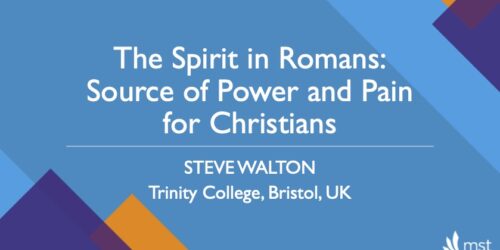Slides and video on the Spirit in Romans
I had the privilege of giving a public lecture at Melbourne School of Theology (MST) on ‘The Spirit in Romans: Source of Power and Pain for Christians’ recently. The edited video, which includes the slides, is above, on YouTube, thanks to colleagues at MST. I’m also pleased to share the slides from the talk here. Thoughts and questions are most...




